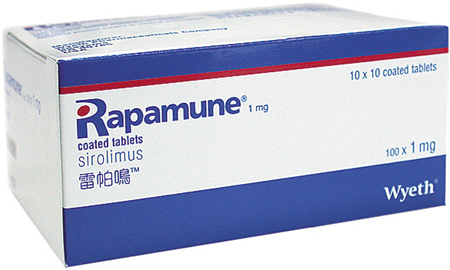Insulin sensitivity is crucial to both health and slowing aging. Decreased insulin sensitivity (or increased insulin resistance, same thing) is associated with vastly greater risks of heart attack, stroke, cancer, and hypertension. Insulin plays a central role in aging. Having better insulin sensitivity results in lower insulin levels, less disease, and slower aging.
Blood donation increases insulin sensitivity
High body iron stores increase the risk of diabetes. Since diabetes is merely the end result or the extreme on a spectrum of insulin resistance, iron can be suspected of causing insulin resistance. But does it.
In blood donation, the removal of blood leads to lower body iron stores, since iron must be removed from storage to replenish the red blood cells lost during donation. Hemoglobin, the oxygen-carrying molecule of red blood cells, requires iron as a necessary co-factor.
Regular blood donors have lower body iron stores than non-donors, on average. (“On average” because certain groups, especially fertile women, have relatively low body iron. Fertile women are also much less prone to disease than men the same age or older women.)
It follows that blood donors ought to have better insulin sensitivity. Turns out that they do.
A group of blood donors had both better insulin sensitivity and lower iron than non-donors. That led to over 50% lower insulin secretion in a test in which glucose was infused into a vein, which can be expected to profoundly affect aging and disease risks.
A problem in studies of blood donors, as I discussed in my book Dumping Iron, is a so-called healthy donor effect. Blood donors are more likely to be healthier than non-donors, since if they are unhealthy they can’t donate, and this could account for some of the better health seen in donors.
A number of ways exist to get around the healthy donor effect to see whether blood donation truly causes better health, or whether there’s a mere association between the two.
In this particular study, donors were carefully matched with non-donors for “age, body mass index, waist-to-hip ratio, and cardiovascular risk profile, including blood lipids, blood pressure, and smoking status.” This matching could eliminate much or all of the healthy donor effect, if the participants were alike in every way except the fact of being blood donors.
Blood donors also had lower ferritin levels, which measures body iron stores. The ferritin of donors averaged 101 μg/L, that of non-donors was 162.
Blood donation causes better insulin sensitivity
To prove that lower body iron via blood donation actually causes better insulin sensitivity, 10 healthy blood donors had their iron lowered via phlebotomy. Serum ferritin was cut almost in half, from 75 to 38.
Insulin sensitivity increased by about 40%.
Similar results were seen in carbohydrate-intolerant patients with non-alcoholic fatty liver disease (NAFLD). In addition, their liver enzymes declined to nearly normal, indicating improvement in fatty liver.
Metformin
Metformin is the most commonly prescribed drug for diabetics; it’s been shown to extend lifespan in animals, and may very well do the same in humans.
Much experimentation and speculation has gone into trying to explain how metformin works.
It turns out, according to a recent study, that metformin induces an iron deficiency-like state. In effect, metformin causes an organism to “believe” it’s in a state of low iron, which upregulates certain cellular processes that are known to prolong lifespan.
The connection between metformin and iron provides further evidence of the close linkage between iron and aging.
Conclusion
Blood donation is associated with better insulin sensitivity.
Phlebotomy (removal of blood) results in better insulin sensitivity.
Metformin both extends lifespan and causes an iron deficiency-like state.
Giving blood regularly and thus keeping body iron stores in the low normal range may give you the same life-extension benefits as metformin. Maybe even better.
PS: For more on the benefits of lower body iron, pick up a copy of my book, Dumping Iron.











8 Comments
Interesting. When you donate blood, they always check your hemoglobin level first, to make sure it’s high enough (mine is usually around 14.5……the cutoff is about 12.5, I think). Since iron is required to make hemoglobin, I’m guessing that hemoglobin starts to drop when the body’s iron stores (ferritin) start getting a little too low – correct?. If so, then hemoglobin should be rough indicator as to ferritin level (on the low end, anyway……..I realize that hemoglobin doesn’t keep rising as ferritin levels rise). So, perhaps one (fairly crude) way to make sure that your ferritin level doesn’t get too low is to just monitor the hemoglobin number when you donate blood? I’d be interested in your thoughts on this.
Hi Rob – that’s right. Anyone who’s otherwise healthy with a lower than normal hemoglobin is likely to have low iron, although there are other causes of anemia. But I’d say that’s about as far as it goes; since one doesn’t know what one’s optimal hemoglobin level is, which will vary slightly from person to person, you couldn’t gauge your iron levels from it.
I saw this headline while actually waiting inline today to donate blood lol. The company I work for has a blood drive every three months. They know to call me if I forget to sign up.
Glad I took your advice a couple of months ago and gave blood. Yet another reason !
I am going to order a few book of yours for Christmas gifts.
From the author point of view does the reseller matter a lot for your revenue?
I plan to order from http://www.bokus.com, but noticed that your links on the page goes to Amazon.
Thanks, Mattias. With regard to paperback copies, I make more when sold on Amazon, but feel free to order from your Swedish bookseller, since the difference is only a couple dollars per book.
Hello PD
I ordered and read your book Stop the Clock as I have been doing fasting (prolonged and IF) and tend to read up a lot of sources. I enjoyed this short book and found it readable and informative. Almost off handedly, I looked at what else you’d published and picked up a copy of Dumping Iron. It’s not even something that has been on my radar and the subject is seldom mentioned by anyone else.
It was a compelling read. So I read it on Saturday, had a ferritin test on Sunday (a weekday here in Dubai), and donated blood on Monday! My count was 453 which horrified me after reading your book. I am 52 and generally exercise and watch what I eat etc without going overboard. The thought that all of that could be for nought if I didn’t get the iron down was quite motivating.
I’ve also bought or ordered the cysteine, IP6, and quercetin and drinking 3-4 green tea a day. Cheap old Lipton Green has one of the highest ECGC counts.
I want to thank you for this information as it could make a huge difference in the coming years. Needless to say I’ll be donating blood every 2 months for some time to come….
Hi Richard, glad the book was of help to you. I knew I had to write it after I read through the research on iron and health.